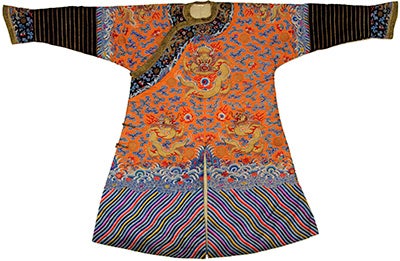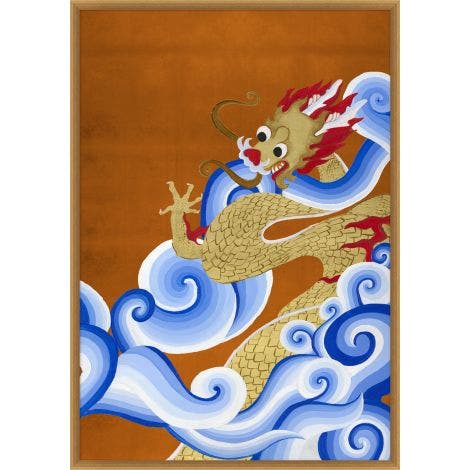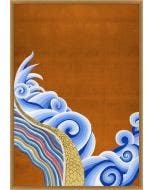Local Storage seems to be disabled in your browser.
For the best experience on our site, be sure to turn on Local Storage in your browser.
Imperial Dragon 2

Our Inspiration: Imperial Robe
China, Qing dynasty
Silk, mid-19th century
Bequest of Mrs. James W. Gerard, 1956 56.210.1
Official costumes in imperial China were highly regulated, and the decorative motifs of court outfits were specific to rank. Among the emblems used on the emperor’s ceremonial robes were the 12 imperial symbols: the sun, the moon, constellations, mountains, a pair of dragons, birds, ritual cups, water weeds, millet, fire, an ax, and the symmetrical “fu” symbol. These emblems, said to have been used since ancient times, represent the emperor’s righteous rule over the universe. The emperor’s robe was the only garment decorated with all 12; the robes of other officials would bear only a selection of symbols.

Our Inspiration: Imperial Robe
China, Qing dynasty
Silk, mid-19th century
Bequest of Mrs. James W. Gerard, 1956 56.210.1
Official costumes in imperial China were highly regulated, and the decorative motifs of court outfits were specific to rank. Among the emblems used on the emperor’s ceremonial robes were the 12 imperial symbols: the sun, the moon, constellations, mountains, a pair of dragons, birds, ritual cups, water weeds, millet, fire, an ax, and the symmetrical “fu” symbol. These emblems, said to have been used since ancient times, represent the emperor’s righteous rule over the universe. The emperor’s robe was the only garment decorated with all 12; the robes of other officials would bear only a selection of symbols.




